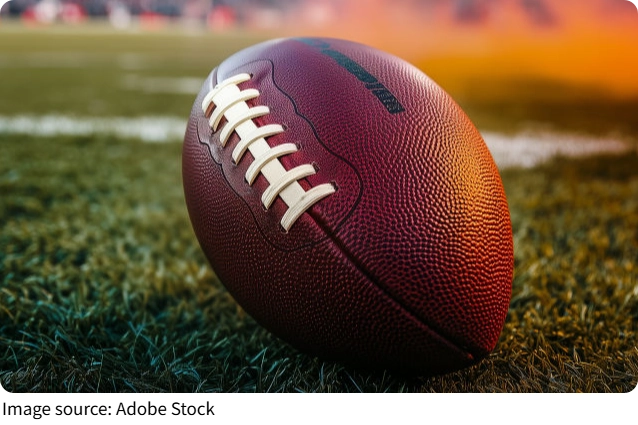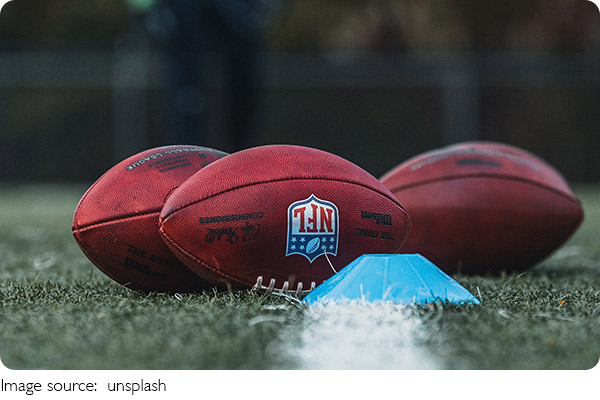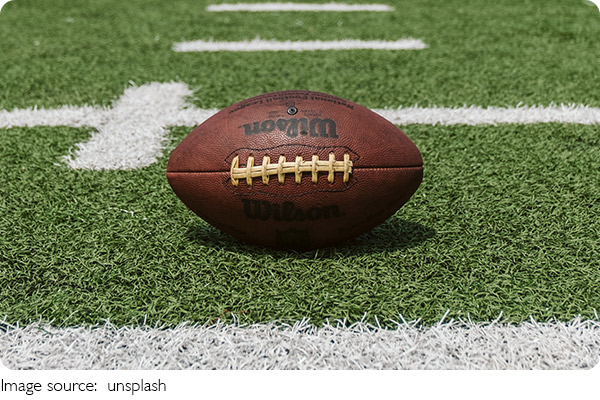Football Made Simple

So the season's here—jerseys are on, chips are out, and the TV's tuned in. But wait, if you're still asking, “Why do they keep stopping?” or “What's 2nd & 7?”, we got you.
In this second part of our crash course on American football, we'll break down what actually happens during a game. No fluff—just the rules, the field, and how to follow the action like a true fan.
What's the goal of the game?
The whole point of American football is to get the ball into the other team's end zone. This is called a touchdown, and it's worth 6 points. The team that scores the most points by the end of the game wins. Sounds simple enough, right? But how we get there is where the fun (and confusion) happens.
How long is a game?
There are four quarters, each 15 minutes long. After the second quarter, there's a halftime break—great for grabbing snacks. If the score is tied at the end of the fourth quarter, the game goes into overtime, which is an extra 15-minute round where the first team to score usually wins. Each team also gets three timeouts per half to regroup and talk strategy.

Understanding the field
The football field might look like a giant grid, and that's no coincidence—it's often nicknamed the “gridiron.” It's 100 yards long between the two goal lines, with 10-yard deep end zones at each end. Lines are marked every 5 yards, and you'll see big numbers every 10 yards up to the 50-yard line (the middle of the field). At the back of each end zone are two tall yellow poles—those are the goalposts used for scoring kicks.
Who's on the field?
Each team puts 11 players on the field at a time, but they rotate between three groups:
• Offense: the team trying to move the ball and score
• Defense: the team trying to stop them
• Special teams: these guys handle kickoffs, punts, and field goals
You'll see frequent player swaps because each group has different roles and skill sets.
How do teams move the ball?
This is where the “downs” come in. The offense gets 4 tries (called downs) to move the ball forward at least 10 yards. If they make it, they get another 4 downs. If they don't, the other team gets the ball.
Let's say it's the first play. The scoreboard will show “1st & 10”, meaning it's the first down, and they need 10 yards. If they only gain 3 yards, the next play becomes “2nd & 7”, and so on. Once they get within 10 yards of the end zone, the scoreboard switches to say “1st & Goal,” meaning they're now trying to score a touchdown directly.

What's a typical play?
Every play starts with a snap—the center (a player in the middle of the line) passes the ball backwards to the quarterback (QB). The QB then decides what to do:
• Hand it off to a running back to charge forward
• Throw it to a wide receiver who's sprinting to get open
• Or sometimes the QB runs it themselves
Meanwhile, the defense is trying to stop the ball, knock it out, or intercept it altogether.
How do teams score?
Here are the main ways to earn points:
• Touchdown (6 points): Run or catch the ball in the other team's end zone.
• Extra point (1 or 2 points): After a touchdown, the team can either kick the ball through the goalpost for 1 point, or run/pass it into the end zone again for 2 points.
• Field goal (3 points): If a team's close enough but can't score a touchdown, they may kick the ball through the uprights.
• Safety (2 points): If the defense tackles the offense in their own end zone, the defense earns 2 points and gets the ball back.
How can we get better at watching?
Honestly, you don't need to memorize every little rule right away. If you know where the end zones are, what a “down” is, and how to read “1st & 10” on the screen, you'll follow most of what's going on. And as you watch more games, you'll pick up on the tricks, penalties, and big plays that make the sport addictive.

Football is more than just a game
American football isn't just about brute force or strategy—it's about resilience, quick thinking, and giving your all. Every play is like a mini battle, and sometimes the entire game flips in the final seconds. That drama keeps fans glued to the screen and shouting at the top of their lungs.
The sport reflects the hustle and grit of everyday life—players push through pain, rely on teammates, and chase victory with everything they've got. Watching football, we're reminded to fight for what we want and back our team, win or lose.
Game on, Lykkers!
So, are we ready to watch a game and finally understand what's happening? Next time someone yells “TOUCHDOWN!” or groans over “3rd & long,” you'll know exactly why. Let's enjoy the season, cheer loud, and maybe even explain a rule or two to someone else!
And hey, Lykkers—what's your favorite team? Or are you just here for the snacks? Either way, we're all part of the game now. 🏈

 · Sport Team
· Sport Team